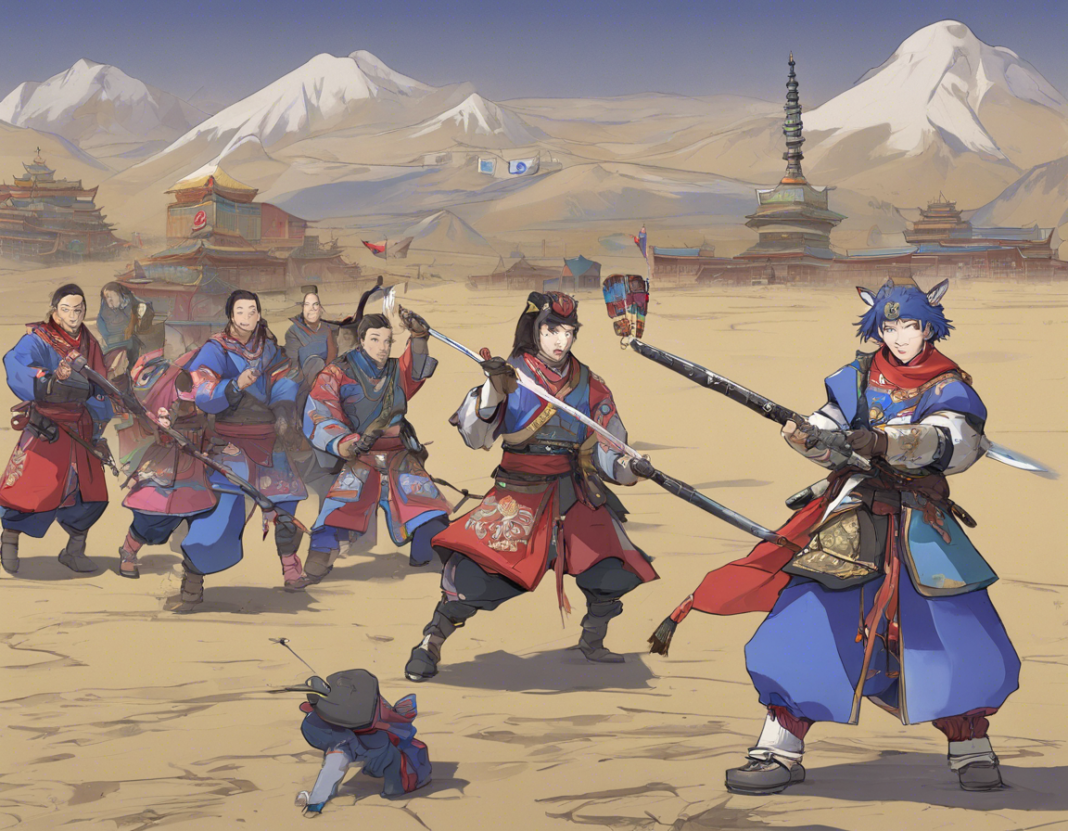With their breathtaking landscapes, rich cultural heritage, and unique traditions, Nepal and Mongolia stand out as two of the most spectacular countries in the world. Nestled in the heart of the Himalayas, Nepal is renowned for its towering peaks, including Mount Everest, while Mongolia boasts endless stretches of untamed wilderness and the vast Gobi Desert. In this blog post, we will delve into the Battle of the Mountains, comparing and contrasting these two fascinating destinations to help you decide which one to add to your bucket list.
Geography
One of the most significant differences between Nepal and Mongolia lies in their geography. Nepal is a landlocked country in South Asia, bordered by China to the north and India to the south, east, and west. The presence of the Himalayas, including eight of the world’s ten highest peaks, showcases Nepal’s majestic mountainous terrain. On the other hand, Mongolia is a landlocked country in East Asia, bordered by Russia to the north and China to the south, east, and west. The country’s landscape is characterized by vast steppes, deserts, and rugged mountains, offering a stark contrast to the towering peaks of Nepal.
Culture
Both Nepal and Mongolia boast rich cultural traditions that have been preserved for centuries. In Nepal, Hinduism and Buddhism are the two dominant religions, shaping the country’s customs, festivals, and way of life. The vibrant city of Kathmandu, with its intricate temples and bustling streets, serves as a cultural hub for visitors to immerse themselves in Nepalese heritage. Mongolia, on the other hand, has a nomadic heritage deeply rooted in traditions of horsemanship, livestock husbandry, and throat singing. Visitors to Mongolia can experience the nomadic way of life by staying in traditional gers (yurts) and participating in eagle hunting festivals.
Adventure
For adventure enthusiasts, both Nepal and Mongolia offer a plethora of thrilling activities to get the adrenaline pumping. Nepal is renowned for its world-class trekking routes, including the famous Everest Base Camp trek and the Annapurna Circuit. The country’s diverse landscapes also make it a hotspot for activities such as paragliding, white-water rafting, and jungle safaris in Chitwan National Park. In contrast, Mongolia’s vast wilderness beckons adventure seekers to embark on horseback riding expeditions across the steppes, camel treks in the Gobi Desert, and hikes in the rugged Altai Mountains. The annual Naadam Festival in Mongolia is a highlight for those looking to witness traditional sports such as wrestling, archery, and horse racing.
Wildlife
When it comes to wildlife, both Nepal and Mongolia boast unique and diverse ecosystems. In Nepal, the dense jungles of Chitwan and Bardia National Parks are home to rare species such as the Bengal tiger, one-horned rhinoceros, and Asian elephant. The country is also a paradise for bird watchers, with over 850 bird species recorded in its varied habitats. Mongolia’s wildlife, on the other hand, is adapted to its arid and harsh environment, with species such as the snow leopard, Gobi bear, and wild Bactrian camel inhabiting the remote corners of the country. The Hustai National Park is famous for its successful reintroduction of the Przewalski’s horse, a species once extinct in the wild.
Cuisine
No travel experience is complete without sampling the local cuisine, and both Nepal and Mongolia offer a tantalizing array of dishes to delight your taste buds. Nepalese cuisine is a reflection of the country’s diverse ethnicities, with dishes such as dal bhat (lentils and rice), momos (dumplings), and sel roti (sweet fried bread) being popular staples. A steaming cup of masala tea is a must-try for visitors looking to warm up in the chilly mountain air. In Mongolia, the traditional diet revolves around meat and dairy products, owing to the nomadic lifestyle of the population. Dishes such as khorkhog (meat stew cooked with hot stones), buuz (steamed dumplings), and airag (fermented mare’s milk) offer a unique culinary experience for travelers exploring the country.
Conclusion
In conclusion, the Battle of the Mountains between Nepal and Mongolia presents a tough choice for travelers seeking adventure, culture, and natural beauty. Nepal’s towering peaks, vibrant culture, and diverse wildlife make it a magnet for trekkers and nature enthusiasts, while Mongolia’s vast steppes, nomadic heritage, and unique cuisine offer a glimpse into a timeless way of life. Whether you choose to explore the Himalayan trails of Nepal or the endless horizons of Mongolia, both countries are guaranteed to leave you spellbound with their charm and allure.
Frequently Asked Questions (FAQs)
- Is it safe to travel to Nepal and Mongolia?
-
Both Nepal and Mongolia are considered safe destinations for travelers, with low crime rates and friendly locals. It is always recommended to take standard precautions while traveling.
-
What is the best time to visit Nepal and Mongolia?
-
The best time to visit Nepal is during the spring (March to May) and autumn (September to November) seasons when the weather is favorable for trekking and sightseeing. In Mongolia, the summer months (June to August) offer pleasant weather for exploring the vast wilderness.
-
Do I need a visa to visit Nepal and Mongolia?
-
Most nationalities require a visa to enter Nepal and Mongolia. It is advisable to check the visa requirements and apply in advance to avoid any travel hassles.
-
What is the currency used in Nepal and Mongolia?
-
The Nepalese Rupee (NPR) is the official currency of Nepal, while the Mongolian Tugrik (MNT) is used in Mongolia. It is recommended to carry some cash in local currency for shopping and dining.
-
Are English speakers common in Nepal and Mongolia?
- While English is widely spoken in tourist areas and major cities in Nepal, communication may be a bit challenging in rural areas. In Mongolia, English proficiency is limited outside urban centers, so basic phrases in Mongolian can be helpful.
Whether you choose to embark on a trek to the rooftop of the world in Nepal or immerse yourself in the nomadic culture of Mongolia, both countries promise an unforgettable journey filled with adventure, discovery, and wonder. The Battle of the Mountains continues to captivate travelers from around the globe, inviting them to explore the untamed beauty of these extraordinary destinations.

